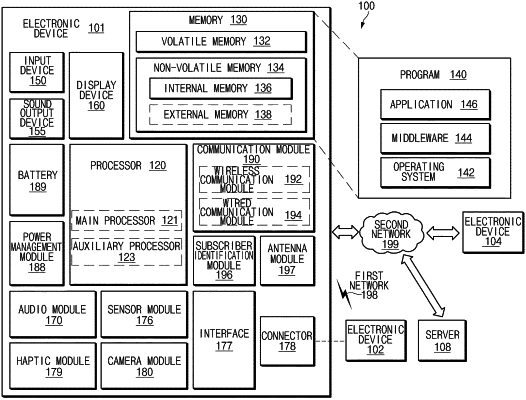| CPC G06F 1/3234 (2013.01) [G06F 8/62 (2013.01)] | 17 Claims |

|
1. An electronic device, comprising:
a display;
a processor; and
a memory operatively connected to the processor, the memory storing instructions and a plurality of applications installed in the electronic device, wherein the instructions, which when executed, cause the processor to:
identify states for each of the plurality of applications, the states each including one of an enabled state, a sleep state, or a disabled state, wherein applications in the sleep state are grouped into a first application group, and applications in the disabled state are grouped into a second application group;
execute a first application to display a first user interface including a first field, a second field, and a third field including a selectable object via the display, the first application being further configured to display a second user interface displaying a first list indicating applications included in the first application group after a user selects the first field, and to display a third user interface displaying a second list indicating applications included in the second application group after the user selects the second field; and
response to detecting a first user input selecting the selectable object included in the third field of the first user interface of the first application, re-identify the states of every application included in the plurality of applications and update the first application group and the second application group;
wherein the plurality of applications includes a second application, based on a periodic use pattern stored for the second application, change the second application to the disabled state for a first time duration indicated by the periodic use pattern, and include the second application into the second application group; when the first time duration has lapsed, change the second application to the enabled state for a second time duration indicated by the periodic use pattern, and exclude the second application from the second application group; and when the second time duration has lapsed and in absence of a request to execute the second application, change the second application to the disabled state for a third time duration, and update the second application group to include the second application.
|